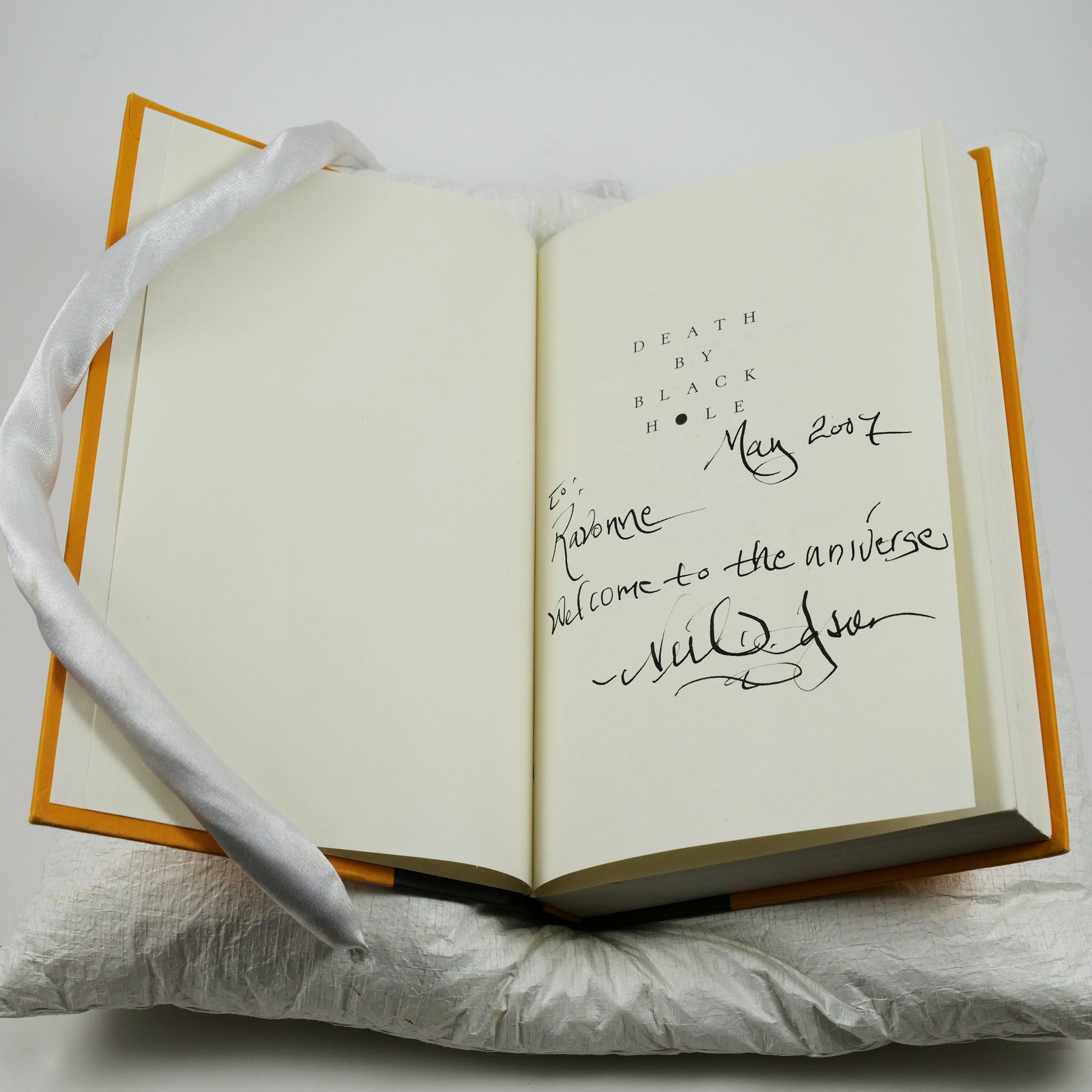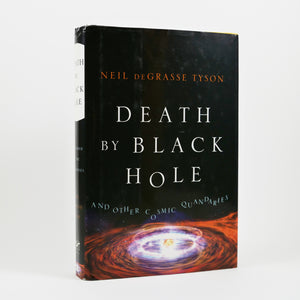Tyson, Neil deGrasse | Death by Black Hole
£150.00
-
Sixth printing, published in the same year as the first. Presentation copy inscribed by the author in elaborate calligraphy on the half title, “To: Ravonne, Welcome to the Universe, Neil D. Tyson, May 2007”. Uncommon signed. The present volume is a collection of forty-two essays originally published in Tyson’s “Universe” column in Natural History Magazine between 1995 and 2005.
Astrophysicist Neil DeGrasse Tyson’s (1958 - ) interest in astronomy began during childhood, when he viewed the Moon’s surface through a friend’s binoculars. Tyson studied at Harvard, the University of Texas, and Columbia, then joined the faculty of Princeton, where “many students found him a particularly inspiring professor” (Krapp, Notable Black American Scientists, p. 304). His academic research has been focused on cosmology, particularly star births and supernovae, and the structure of the Milky Way and other galaxies.
Throughout his career Tyson has also been focused on sharing astronomy with the general public, leading to him becoming one of the world’s most famous scientists. Since 1996 he has been the director of the Hayden Planetarium in New York; written columns in popular magazines; published sixteen books; become a popular figure on Twitter; and hosted several television shows, including the 2004 PBS series Origins and the 2014 reboot of Carl Sagan’s Cosmos. His reputation, however, has been affected by rape and sexual harassment allegations made public by fellow graduate student Thchiya Amet El Maat, professor Katelyn Allers, former assistant Ashley Watson, and an anonymous woman in late 2018.
-
...and Other Cosmic Quandaries. New York & London: W. W. Norton & Company, 2007.
Octavo. Original yellow boards, black paper backstrip, titles to spine gilt. With the dust jacket. A little light rubbing at the edges, minor bump to the upper corner of the boards. An excellent copy in the jacket with a little creasing at the head of the spine panel and a minor vertical crease near the top of the spine panel.






